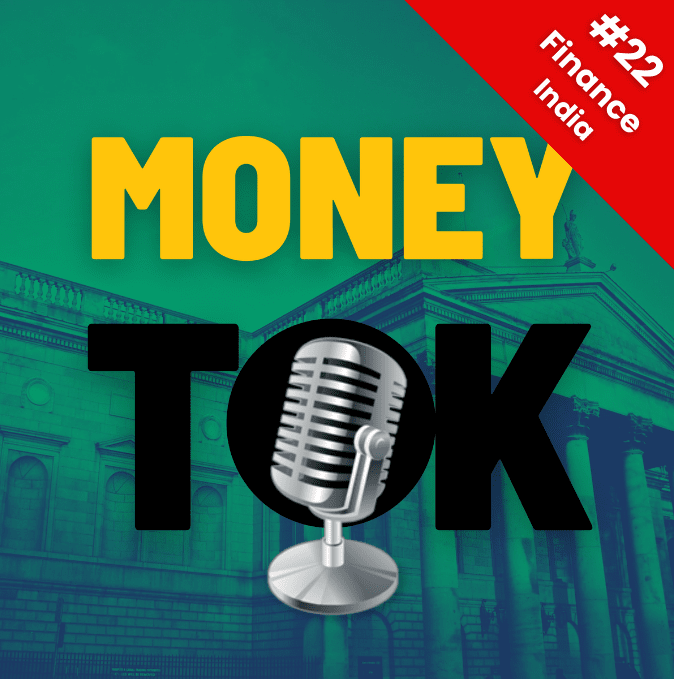MT18 | Climate-Proof Your Finances
We recently read a couple of worrying reports. One was about Dragonflies spreading north as the world warms, giving them a greater habitable area. And the second one was about animals shapeshifting in response to the climate crisis. Warm-blooded animals are changing beaks, legs, and ears to adapt to a hotter climate and better regulate temperature.
And further, on the human side, the latest issue of the Economist reports that climate commitments so far will at best give us a 50-50 chance of hitting the outer bound 2-degree temp rise with only a 5% chance of keeping with 1.5 degrees, the much safer limit that lets us continue with life as usual. That’s chilling, in all the wrong ways.
So if you are still reluctant to adapt to the changing climate, it is time to learn from the animal kingdom and evolve.
Table of Contents
Discussion Topics: Climate-Proof Your Finances
- Current climate commitments will give us at best a 50-50 chance of meeting climate goals, so it’s important we take action to risk-proof our portfolio
- We could invest in companies that form part of the solution to climate change or those that are working towards net zero emissions
- If you’re into real estate, consider REITs investing in green assets
- If you’re the type that believes in physical assets like property or jewellery, consider diversifying into things that can be held digitally and hence are portable eg funds
- Also, digitise your documents and save them on the cloud and backup drives
- Finally, stay mentally and physically fit so you can handle the rigours of climate-impacted life
Transcript: Climate-Proof Your Finances
Hi, everyone, welcome to another episode of MoneyTok, where we help make personal finance and investing simple and accessible through both my own experience. I’ve been doing this for about 20 years now. This show is about money and wealth creation. And we talk about so many ways of making money, bought retirement planning about stocks, bonds, gold, real estate, crypto, and so many kinds of things.
We recently discussed how to look at retirement proofing through the lens of climate change and how to identify a location that will be habitable for the longer term. But this begs the additional question – how do we also climate-proof our savings and investments? Or in business terms how do we do a business contingency plan for our future? Today we’ll talk about just that.
With climate change defining our present and reshaping our future, it is important to align your investment in that direction. Obviously, as global policy action starts picking up momentum to tackle global warming, it presents some obvious investment opportunities. Just like the internet revolution, we are standing at the cusp of a revolution in green technology, urban farming, and energy. Investing in these sectors can be a good hedge against a deteriorating terra firma. There are a lot of dedicated green funds or ESG funds now, allowing access to small investors too in impact investment. Or you can look at company-specific stocks or angel investing in a company geared towards dealing with climate change.
Even in the universe of established companies, there are some who are faster off the block on the path of net zero carbon. Like Microsoft. These should also reap higher rewards of technological innovations in offsetting technologies in the future, and hence serve as good diversification options for your portfolio
The second is via physical assets. While you can buy climate-protected property for your own use, you could also do the same as an investment. You might be able to acquire land for cheap in colder places, which will eventually become more temperate and hence more valuable as global temperatures rise. You could also purchase REITS focused on developing green townships. Also look at arable land, as one might face a real possibility of need for sustenance farming. Look, we’re not advocating for you to displace farmers by buying massive expanses of land – that will make a bad problem much worse – but we also think it is prudent to have access to enough square footage for sustenance either as a family or better yet as a small community.
The third is via digital assets. The images from the 2011 Tsunami in Japan, the recent flash floods in Germany, or hurricane Ida affecting NY, go towards reminding you that when pitted against nature, your home stands no chance. So don’t keep all your eggs in one basket literally. In my travels, I once met a Nat Geo photographer, who lives in Alaska. He told me how he stores all his body of work, and I am talking of terabytes of digital prints. He keeps them backed up in 2 separate hard drives, stored at two very different locations, apart from keeping some on a cloud of course. I found this a bit extreme at the time, but have since come to appreciate his planning.
- Have some investments which sit in the digital world, like electronic banking accounts or broking accounts or at least in another physical location.
- Keep scans of all your financial papers, important deeds, agreements on a cloud, and a verified physical copy at another location. In the business world, it’s called Business Contingency Planning (BCP) where companies prepare for an unexpected disruption in usual operation by maintaining a shadow site at another far-removed physical location. Make sure you have your personal BCP too. In short, diversify not just the type of assets you hold, but the locational factor too.
- Another very important BCP strategy is to distribute your assets across banks, to safeguard against banks going insolvent. This by the way is nothing to do with climate change. Most countries have experienced banks going under and taking individual savings with them. Yes, in many countries deposits are insured but a) the insurance covers up to a specific limit, not all of it and b) who knows how long it might take to get it?
- Finally, subscribe to one or more password manager apps where you can securely store all your important logins. These help you avoid having to reuse passwords across sites where a hack in one site leaves all your other logins exposed. In addition, if anything were to happen to you, your trusted circle can get access to your logins, saving them a lot of pain, anxiety, and frustration.
By the way, the concept of BCP is to be prepared. So start working on these today, not at some undefined future date. Calamities don’t wait for when it is convenient.
That brings us to the final pillar which is the skill set. Actually, the biggest investment according to me is an investment in mental and physical agility. The fact is that lifespans are only increasing. You don’t want to be in a vegetative state for the extended tail end of your life. Climate change also means that the it may not be possible to stay put at one place for extended periods of time, as one reacts to the disasters faced by each site. You should be fit enough to be self-sustaining. Take care of your health so you remain fast, nimble, and strong. Learn basic survival skills like basic first aid and how to grow food. Only if you learn these today will you be able to do them when you’re 60 or older – when the effects of change start to be felt.
I have been deeply inspired by the people I have met in my travels towards this. I have traveled, and done some long hikes in difficult terrains with a lot of people over 70 years old. I have always marveled at how agile they have kept themselves. Not just physically (putting me to shame so many times, being decades younger than them) but mentally too. I once did a glacier hike with a 75 yr old gentleman recuperating from knee surgery. He didn’t let the surgery daunt him, or stop him from walking on that tricky surface with crampons. And one of my dearest friends is an 80yr old I made friends with in Antarctica, who still can defeat me in both general knowledge and a long hike. They have not hung their boots up waiting for the curtains to fall, but are actually living their life to its fullest, with the same enthusiasm and curiosity as I would expect of a 30 yr old.
That shows that Health is not just physical, but equally, if not more a mental game.
The recent pandemic has only reinforced the need to be able to keep oneself fruitfully engaged even if taken out of a familiar environment. To be able to adapt, and show mental fortitude in bleak times is like building a strong mental immunity system. It enables you to deal with the unknown better and take decisions with a freer mind. You may have to restart more than once in your lifetime in terms of where you settle, and what vocation you choose as economies, geographies, and ecosystems get disrupted by climate change. Also, technological advancements mean the way we interact with our environment can change in the blink of an eye. Think of your grandparents struggling with a smartphone. Building the mental muscle to deal with that will go a great way in creating a comfortable retirement.
So in summary, whatever your concept of retirement, and its timeline, we hope we have set you thinking on how to build its pillars. Some things are relevant even today, like how to invest for a greener planet, and how to do your personal BCP. Some require immediate calls for your time, like investing in mental and physical health. And some are food for thought for a safer future like location and community. All while keeping the very relevant context of a growing climate crisis.
Thanks again for joining us today. We really like sharing what we know and we hope these provide food for thought for you as well. If you are listening to us on Apple Podcasts, may we request you to spend a few sends leaving a 5-star review and rating? And if you’re on Spotify or Google, please subscribe or follow our show.
Thank you for your support. We are Amit and Neha, with MoneyTok. See you next time!



